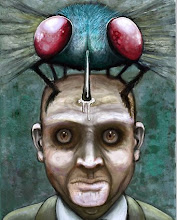Away From Icebergs
The first “iceberg” mentioned by Mr. Anderson is the “just in case” collection. This has always been one of my pet peeves. When I was first working in a library I always wondered about those librarians who wanted to keep books that were never checked out and/or in no way corresponded to the curriculum. I remember that my first library had several copies of Dr. Doolittle from the 1920’s. Besides being horrible books that no one wanted to read, the were racist. They were still in my library. It was even worse in New Orleans. I had five copies of a book published by a vanity press that extolled the virtues or slavery on plantations in Louisiana. At any rate, the point is that unless a book will definitely be used on a regular basis there is no reason to have the book, just in case. The internet is what should be used just in case.
User Centric Services
Electronic resources offer great potential in making it easier for anyone to find information. Think about the progress may in the last thirty years. Think back to the card catalogue. When cataloguing a nonfiction book how many “tags” or subject card did the average book have? Five, six, and the time involved? Computers have the potential of making the entire information seeking process totally independent of any help. Of course, there will always be the need for some supervision, but the entire process can be streamlined greatly and result in a far more efficient process of information location.
Come to Us
Lastly, the internet has liberated information from the tyranny of the librarian. Now, the patron does not have to rely upon the librarian as gatekeeper. Pathways to information can be readily available throughout the user’s environment. Links on homepages, imbedded instructional powerpoints and video allow access and intstruction to resources in all places and at all times. In the not too distant there will be no contact between librarian and patron aside from the resources provided remotely.
Library 2.0 Means:
Library 2.0 allows far greater access to patrons for librarians and greater access to resources for patrons. The potential for helping patrons is great with Library 2.0. No longer is it necessary to get patrons to get to the library. Now patrons can access information from a variety of access point. Both direction and instruction can be planned in advance and allow patrons to obtain information in a more timely and efficient manner. With this the librarian will spend more time planning and implementing the structures required to assist patrons in all aspects of information location and also structures to assist and instruct in the planning, formulation and completion of projects. On the other side of the equation, patrons will be able to access information with minimal help from a information specialist. Just tag alone assist in finding information without much prior knowledge, but even more important the information needed to access information can be mad available at the point of access. In the future we will be as much concerned with a surplus of information rather than a shortage.
Subscribe to:
Post Comments (Atom)

It is a brave new world we are entering. I hope we don't entirely do away with patron/librarian contact, but 2.0 tools will make the patrons more in control of their own information needs and that has to be a good thing.
ReplyDeleteYou are on the downhill slide - only a few more Things to do!